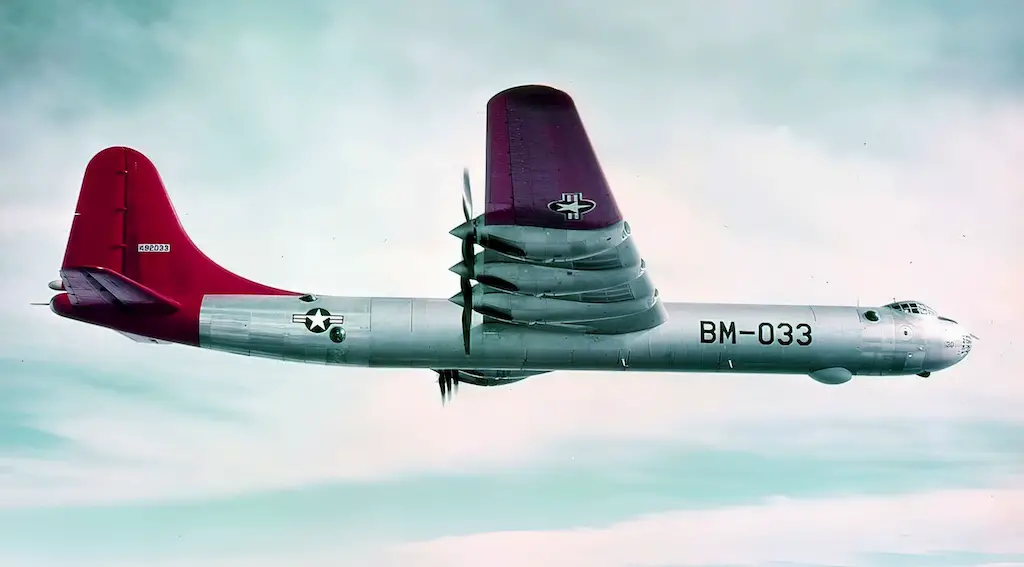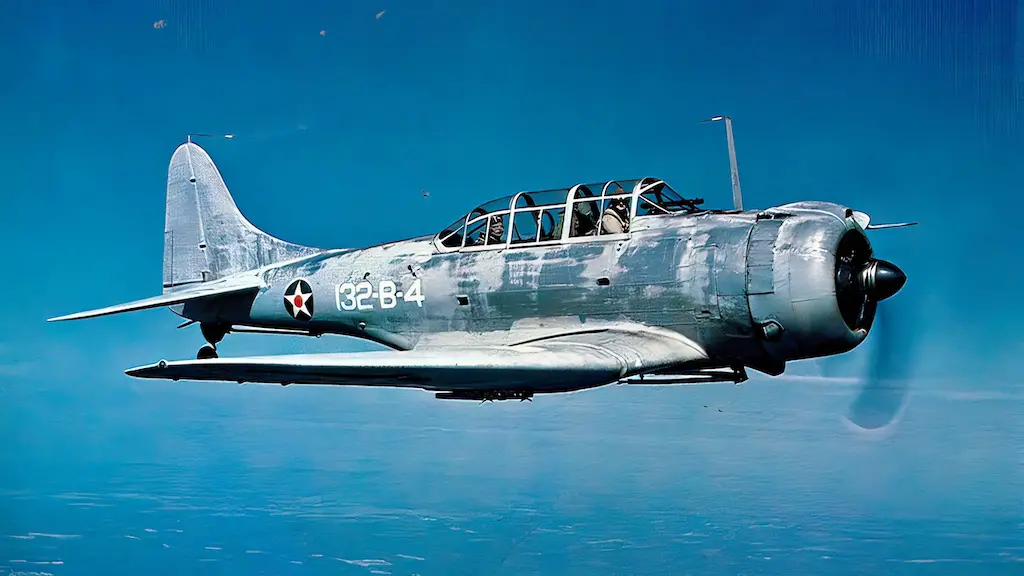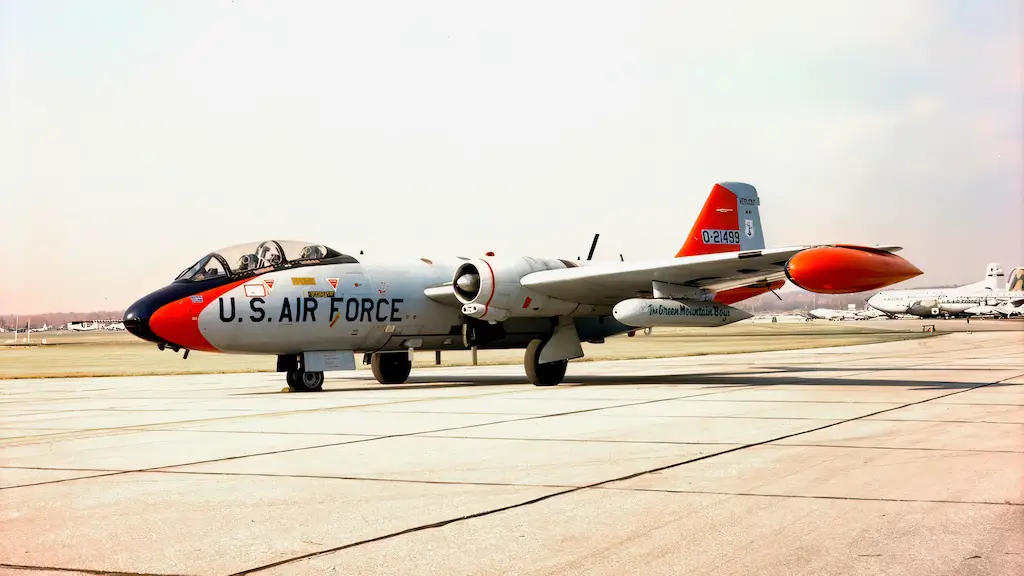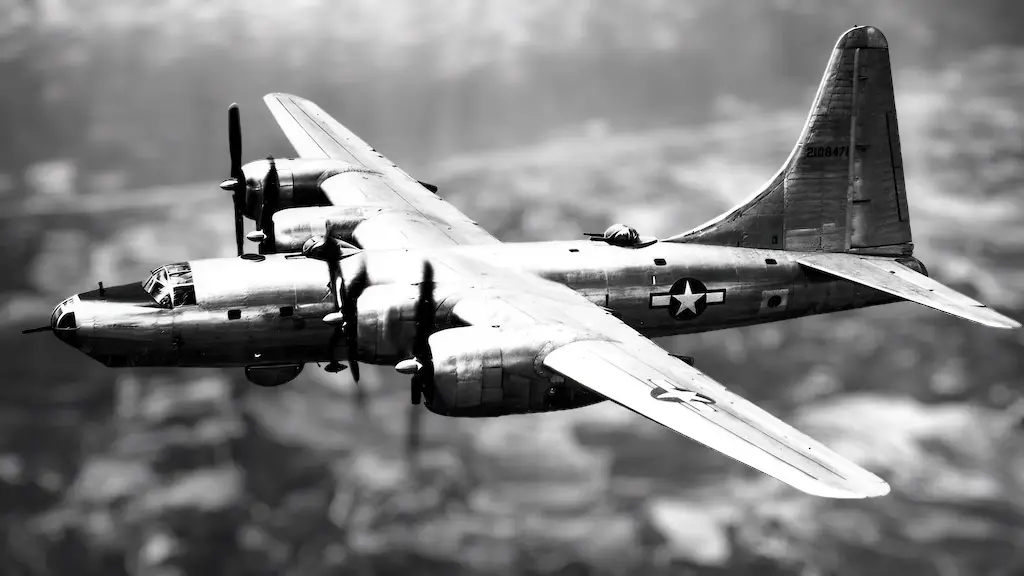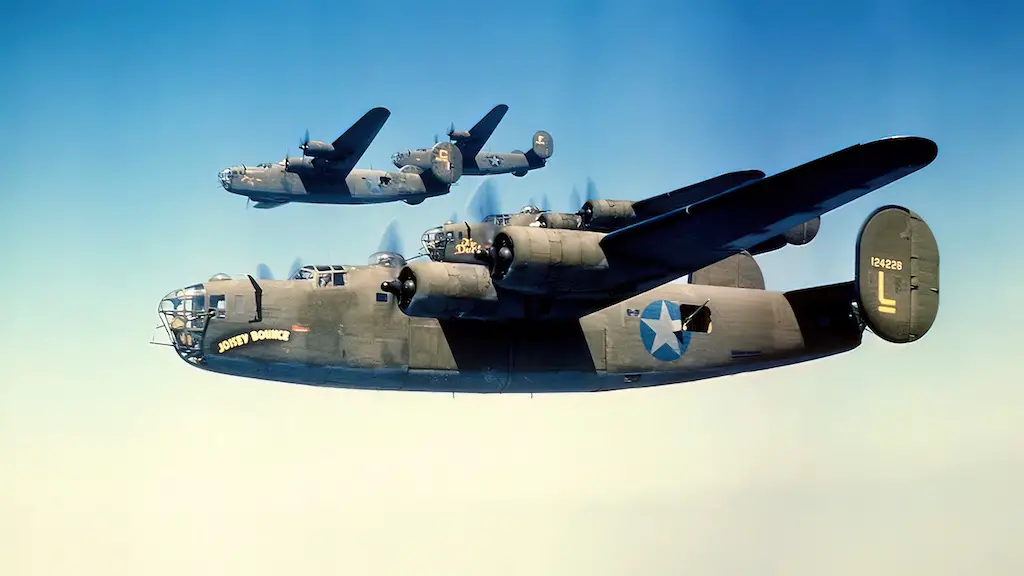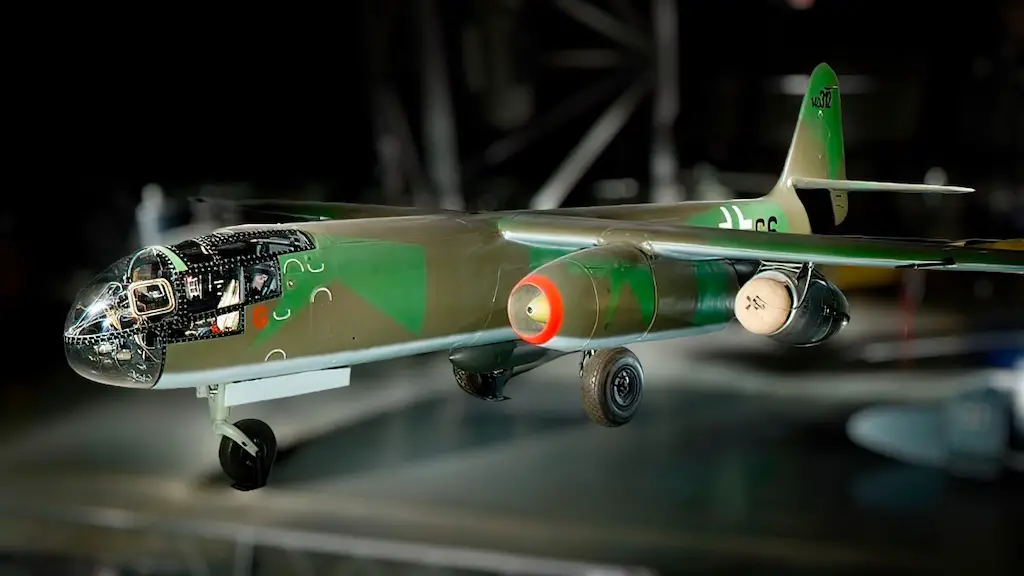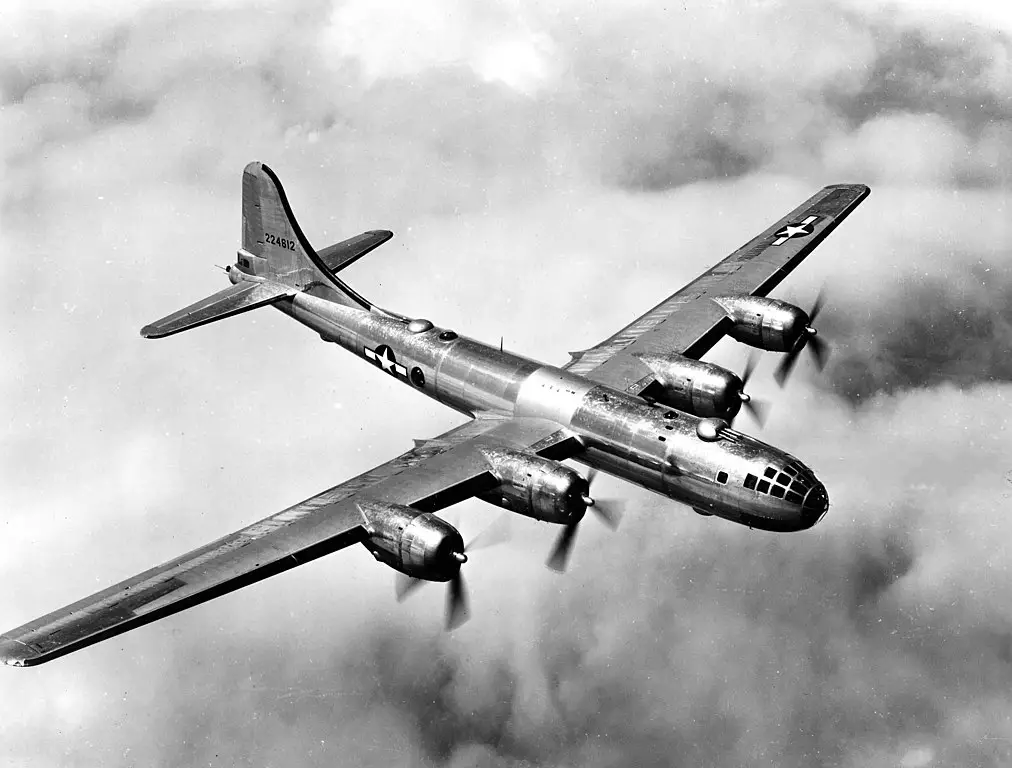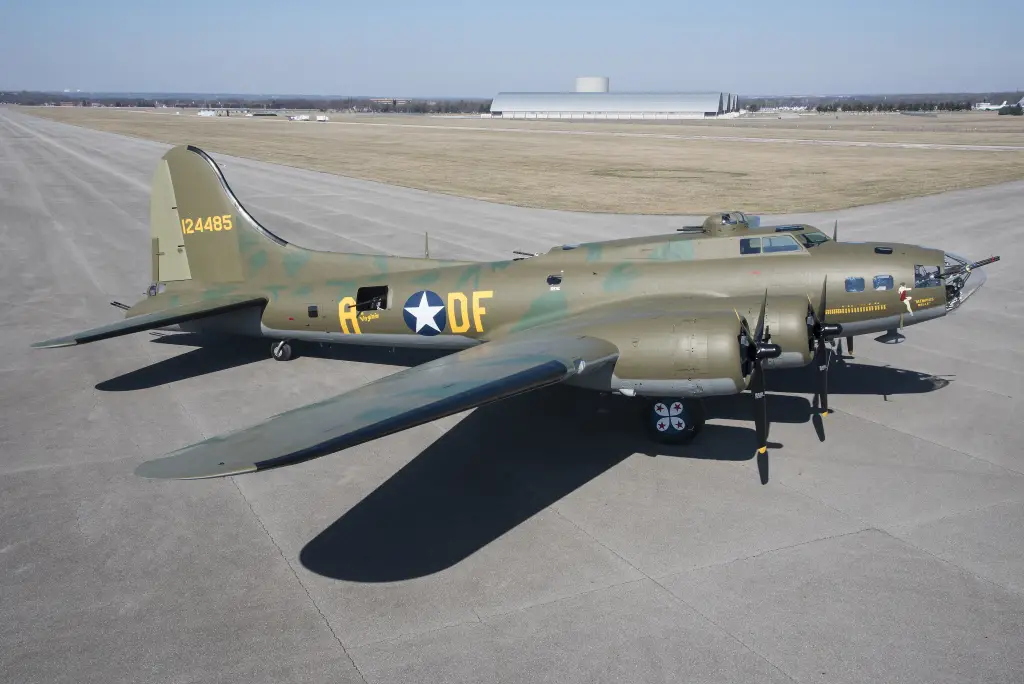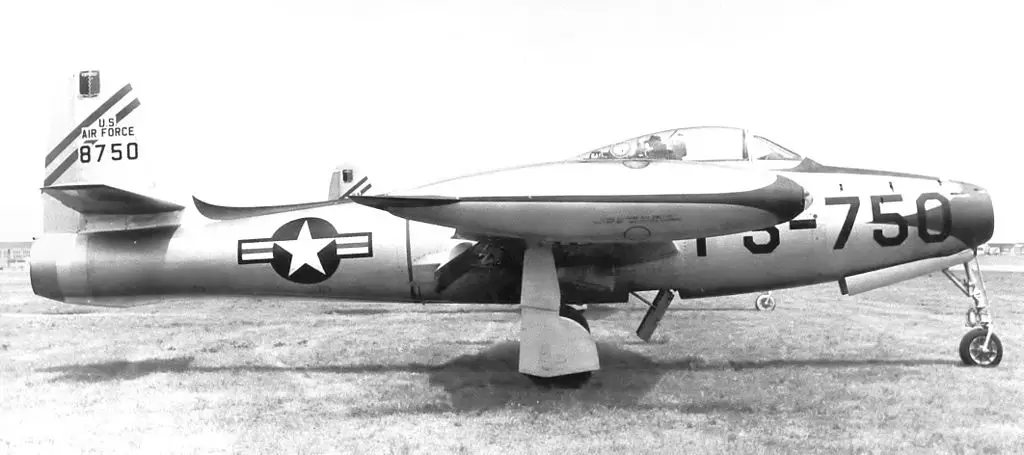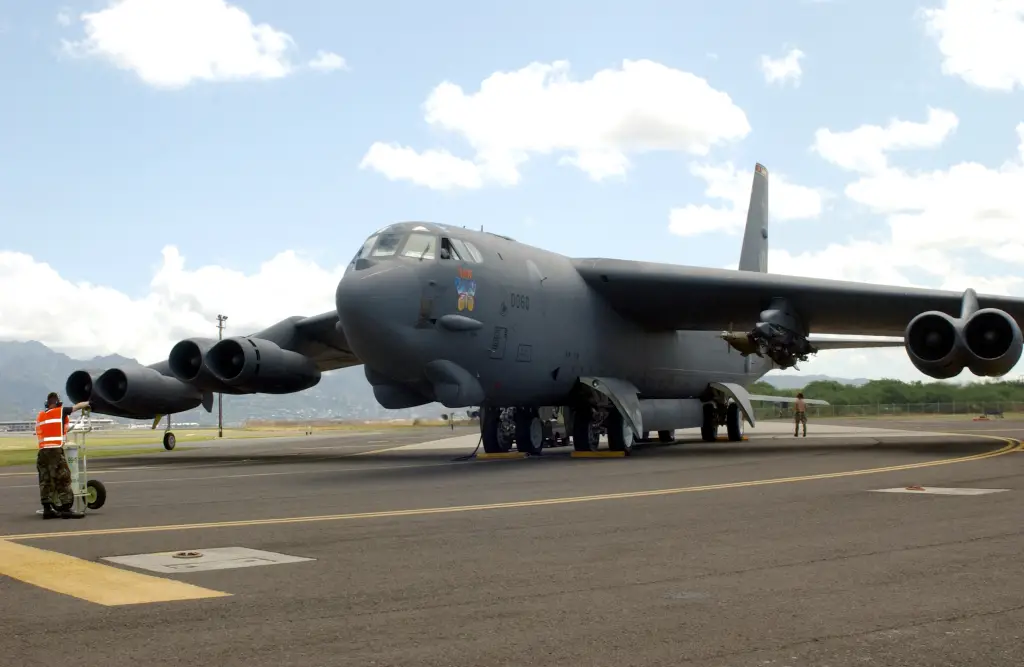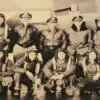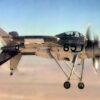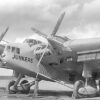Long range bomber
Convair initially designed B-36 as a long-range bomber. It would be able to run bombing raids on Germany from bases in the U.S. in case the U.K. fell to the enemy. Work on the project started as early as 1941 but WWII ended before the B-36 made its first flight in August 1946. Still, there was no shortage of tasks for the new intercontinental bomber. As by then the Cold War was flaming up. And only two years later it was introduced into service.
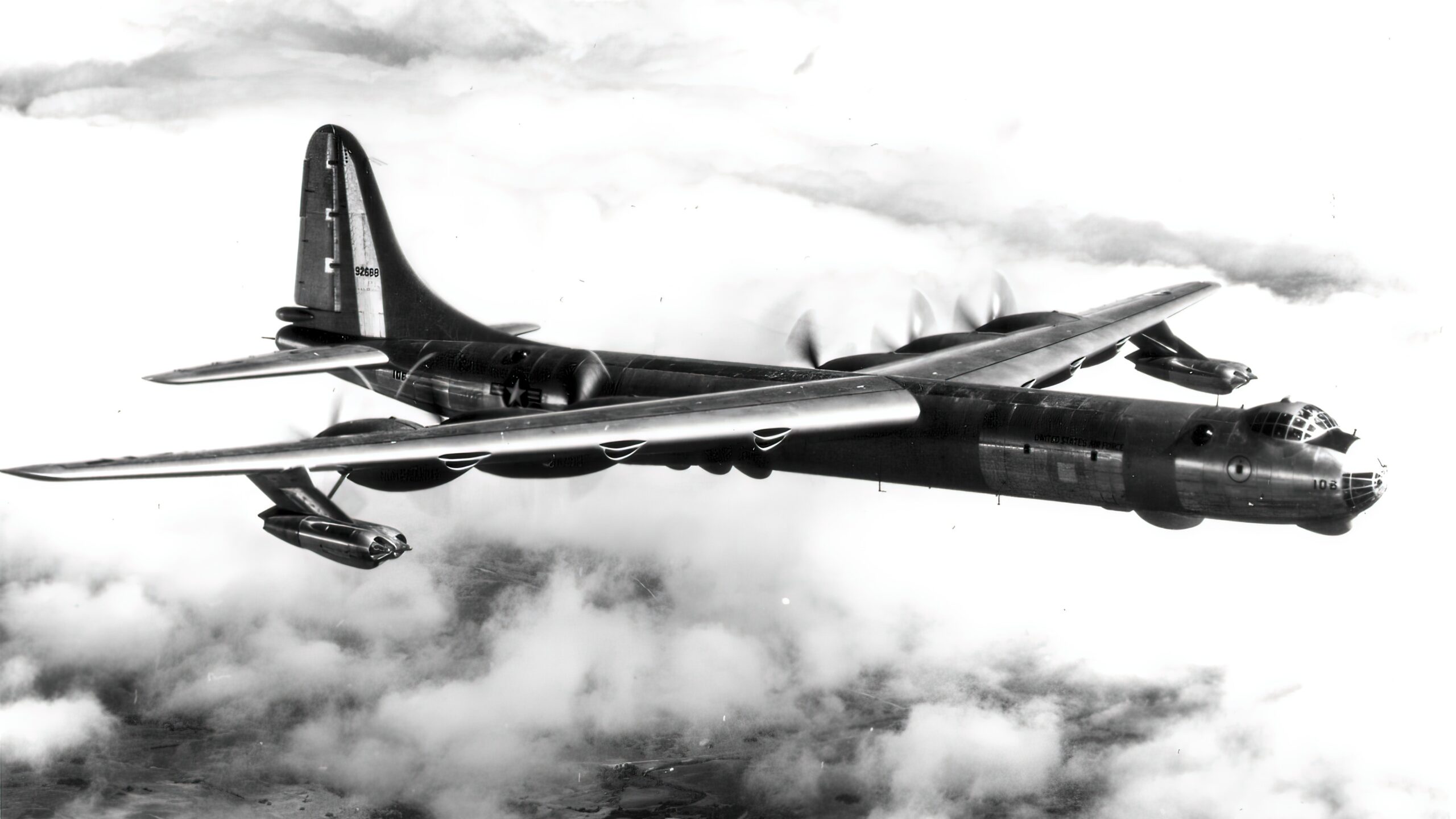
Big aircraft
With its 230 ft wingspan and 162 ft of length, B-36 became the largest mass-produced piston engine aircraft ever built. It dwarfed both the B-17 Flying Fortress and B-29 Superfortress. To get that behemoth up in the air it was equipped with six Pratt & Whitney R-43-60-51 radial piston engines, providing 3,500 hp each and arranged in a pusher configuration. Even that proved not to be enough, though, and later versions of B-36 got four additional jet engines providing extra thrust on take-off and additional speed on the bomb run. Hence, the saying “six turning, four burning” used to describe the Peacemaker.
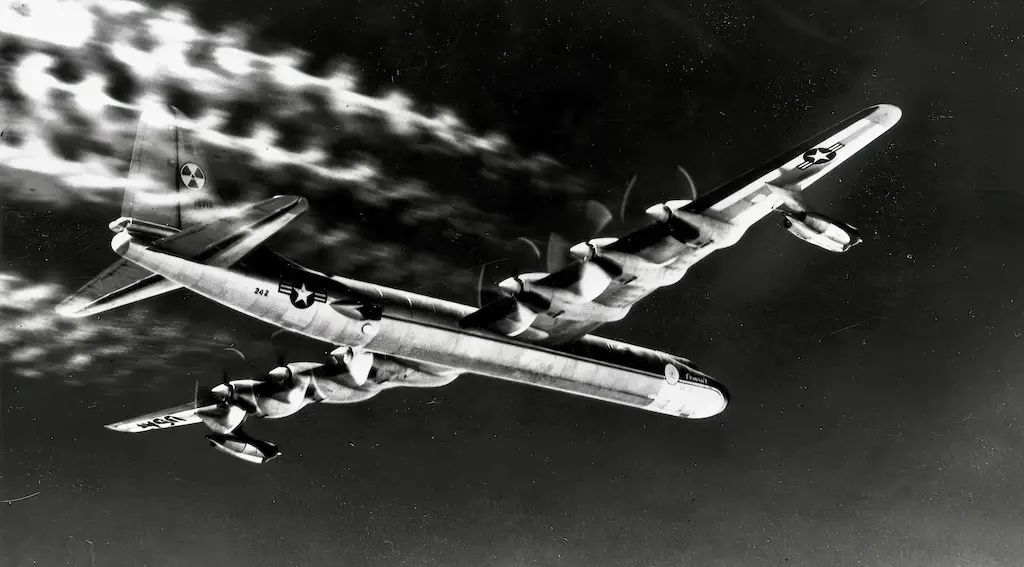
Payload capabilities
B-36’s key purpose was the delivery of America’s most powerful nukes, such as the Mark 17 hydrogen bomb. Due to its range and payload capabilities unrivaled at the time, for some years it was Strategic Air Command’s primary nuclear weapons delivery platform. But B-36’s application was not limited to bombing missions.
There was also a reconnaissance version, as well as more exotic modifications. One of those was developed under the Fighter Conveyor (FICON) project. The idea was that B-36 would carry in its bomb bay a parasite fighter, which could be used for attack, reconnaissance and escort missions upon delivery to a target area far away from its base.
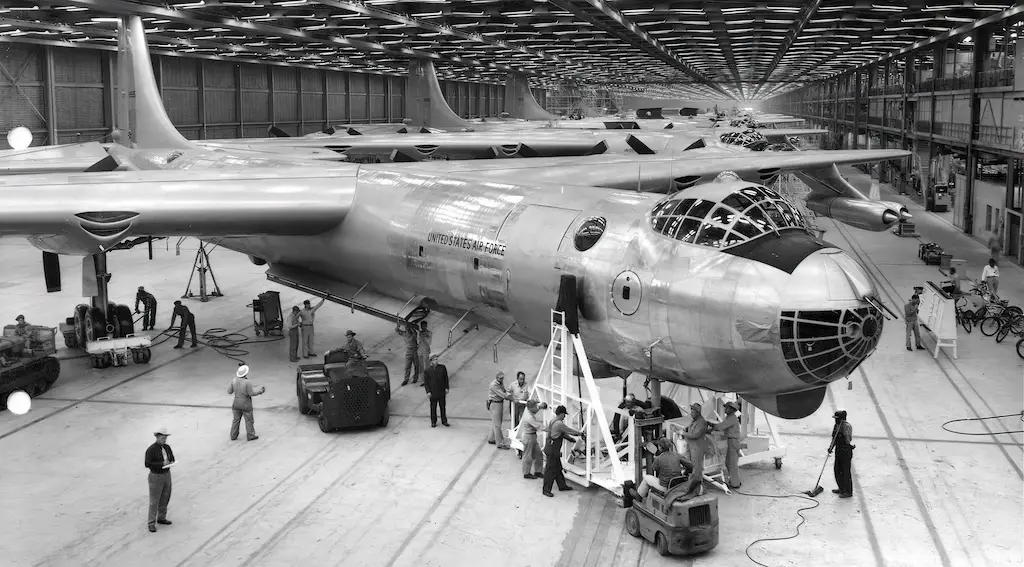
‘Parasite’ fighter
In 1952-53 the concept was realized using Republic YF-84F as the parasite fighter. It was not a super elegant solution, to create the FICON combination the bomber had to be driven on to a ramp before the fighter would be squeezed under it. And yet the scheme was working: tests involving take-off, launch of the ‘parasite’, its retrieval and landing were successfully completed, and the system even saw operational use for a couple of years.
It was abandoned due to persisting difficulties in the recovery of the parasite fighter and rather modest flight range of the combined aircraft resulting from the additional drag produced by the fighter sticking out of B-36’s belly.
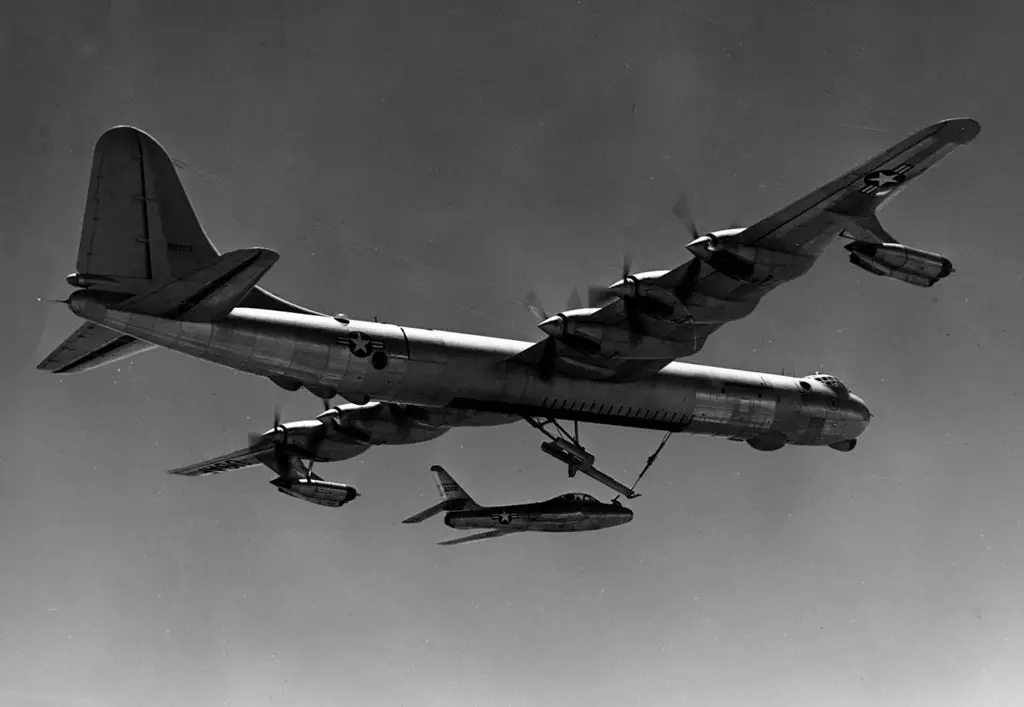
Sci-fi project
FICON was not the only sci-fi project based on the B-36 airframe. Another was the nuclear-powered aircraft. It, however, never went beyond carrying a nuclear reactor in the bomb bay to test radiation levels. Installation of sufficient shielding to protect the crew came at a price of a significant increase in the aircraft’s mass and a decrease in speed, making it just too sluggish.
More than 380 aircraft of the type were built between 1946 and 1954. In 1959 B-36 retired after a decade of service, giving way to a more advanced and all-jet-powered Boeing B-52 Stratofortress. During its years of service, the Peacemaker was never used in combat.

